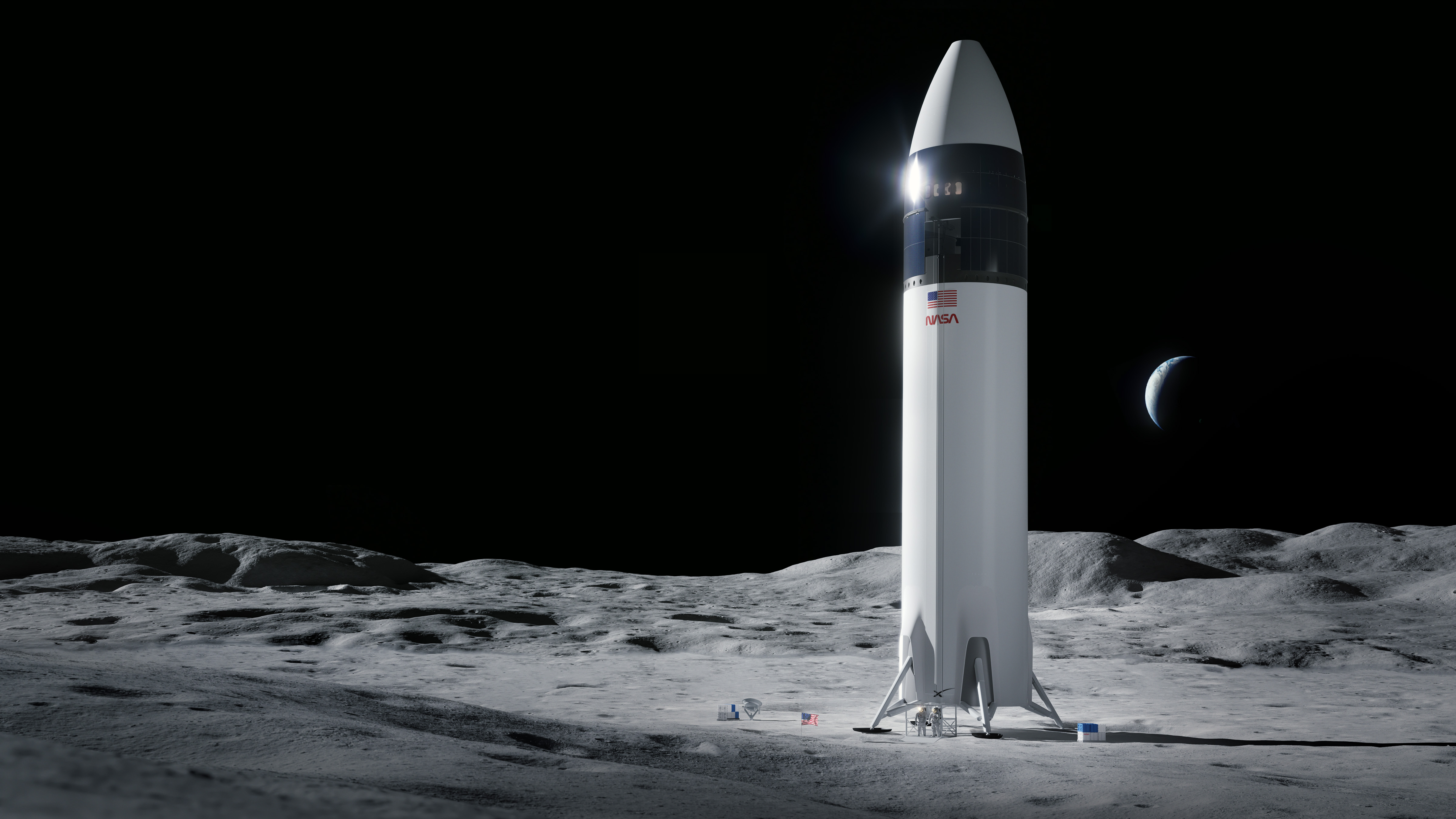By Interstellar Nerd · Updated 20 June 2025
 alt=”Artemis III landing region candidates: Connecting Ridge region”>
alt=”Artemis III landing region candidates: Connecting Ridge region”>
Fifty-five years after Apollo 17 packed up its lunar rover and headed home, NASA is planning something far less certain and far more consequential. The Artemis III mission—targeting no earlier than mid-2027—will attempt humanity’s first landing at the Moon’s south pole, where sunlight skims the horizon, temperatures plunge to minus 220 °C, and billion-year-old water ice hides in perpetual night. Engineers call the region “cryogenic hell.” Entrepreneurs call it “the fuel depot of the solar system.” Politicians, eyeing China’s rival Chang’e 7 plans, simply call it urgent.
This article does not list specs and walk away; it interrogates the hardware, the politics, the fragile economics, and the fragile humans risking the trip. Think of it as a guided tour through a giant, multidisciplinary gamble—part Cold-War-redux, part Silicon-Valley-moonshot, and part utopian promise that the Moon is more than a dusty museum.
The Pole of Cold and Cash: Why Shackleton Crater Matters
The south-pole pitch begins with a single data point: water ice. In 2018, NASA’s Lunar Reconnaissance Orbiter and India’s Chandrayaan-1 mission used infrared spectrometers to confirm patches of pure ice hiding inside polar craters. Those craters are geological thermos bottles—so deeply shadowed that sunlight hasn’t touched some spots in two billion years. Water, of course, can be cracked into hydrogen and oxygen, the same propellants that send the Space Launch System roaring off its pad. Suddenly a crater becomes a filling station.
Planetary economist Casey Honniball frames it starkly: “Every kilogram you launch from Earth costs between US $10,000 and US $40,000 once you fold in program overheads. If you can mine a ton of ice in-situ, you avoid launching a ton of propellant—and you avoid all the political horse-trading that goes with raising that money on Capitol Hill.” NASA’s models estimate Shackleton’s icy floor could hold 600 million metric tons of water. Tap even one percent and you have enough oxygen-hydrogen to send a Mars transfer stage out every year for decades. That’s the seductive theory.
The flip side? Temperatures in the crater never rise above –200 °C. Frost sticks to optics. Bearings seize. Solar arrays go dark. “Everything mechanical that survived equatorial Apollo would shatter down here,” says Dr. Jacqueline Quinn, a materials scientist at Kennedy. So Artemis III is both a promise and a test: prove we can work in this deep-freeze—and prove the economic story isn’t PowerPoint alchemy.
Opening Volley: SLS Block 1B and Its Eye-Watering Price Tag
Artemis III begins with an outrageously bright flame at Pad 39B. The Space Launch System Block 1B swaps out the interim upper stage for a quad-engine Exploration Upper Stage, giving the rocket the heft to lob 38 tonnes toward the Moon. When its four RL10-C3 engines ignite, they sip hydrogen with an efficiency nobody else on Earth can match: 461 seconds of specific impulse. In the back rooms of NASA’s Michoud Assembly Facility, engineers joke the EUS is “a champagne goblet bolted to a beer keg”—delicate plumbing perched atop four SRB hammers.
Champagne doesn’t come cheap: the U.S. Office of Inspector General pegs each SLS launch at roughly US $4.2 billion once you account for amortized tooling and workforce costs. Boeing, the prime contractor, counters that SLS is the only super-heavy stack receiving full human-rating scrutiny. Commercial behemoths like SpaceX Starship and Blue Origin’s New Glenn remain “under construction.” Yet critics note that reusable systems will inevitably fly cheaper, leaving SLS as a financial dinosaur. Artemis III’s managers—in a moment of candor—tell me SLS is the insurance policy that buys time for industry to mature. “It’s the Saturn V again,” one says, “but this time the starting gun for commercial players, not the finish line.”
Orion’s Long Silence: Thirty Days Away From Mother Earth
High above the Atlantic, the Orion spacecraft will turn its solar wings toward the Sun and fall into an eerie radio hush. For the crew—four seats, 9 m³ of habitable volume—the longest deep-space voyage in history begins. NASA quietly doubled Orion’s water-recycling efficiency: condensed humidity is reacted with hydrogen in a Sabatier reactor, yielding drinkable liquid and methane exhaust. The closed-loop system is more mechanical garden than spaceship.
Yet Orion’s biggest news is what broke on Artemis I. Sensors found hairline char-layer cracks on the PICA-3 heat shield, likely caused by uneven heating during its Mach 32 re-entry. Since then, Lockheed engineers have cut tiny relief trenches into the ablation pattern and sandwiched boron-nitride micro-mesh between layers. Will that cure the crack propagation? The next re-entry will tell. A veteran flight-director confided that Orion’s heat shield now owns the mission’s highest “risk position.” The crew will carry an improvised patch kit—a first for any U.S. capsule.
Starship HLS: SpaceX Bets a Skyscraper on Dusty Regolith
Docked in a lunar halo orbit will be SpaceX’s Starship Human Landing System, the tallest vehicle ever to touch extraterrestrial soil. Think stainless-steel grain silo meets Swiss ski-lift: astronauts ride a 30-m elevator down to the surface. The white ceramic tiles that flashed disco sparks on recent test flights replace Starship’s black TPS, reflecting polar sunlight and holding interior temperatures in the livable range.

Here’s the audacious choreography: fourteen tanker launches one after another in low-Earth orbit, each transferring sub-cooled methane and oxygen into a waiting depot; HLS then fills up, burns for the Moon, brakes into orbit, and descends. SpaceX has done none of this in practice. In April 2025 a Raptor Vacuum injector hard-start tore Ship 36 apart; the company rewelded the injector using a niobium liner that Elon Musk called “the plumbing from hell.” NASA’s contract, fixed-price at US $2.9 billion, leaves overruns on SpaceX’s dime—so Musk has reason to weld faster than bureaucrats can fret.
Veteran lunar-lander engineer John Connolly is cautiously optimistic: “Starship is a skyscraper on its side. You worry about plume impingement, the high center of gravity, the ladder ride down. But it’s the only architecture with room to bring back refrigerator-size ice cores.” In other words, the risk is the point.
AxEMU: Prada Stitching, Graphene Dust Shields, and Heads-Up Maps
Every photo you’ve seen of moonwalkers in poofy Michelin suits is about to look Jurassic. The Axiom Extravehicular Mobility Unit (AxEMU) is the 21st-century antithesis: hard-torso, rear-entry, and built like a Formula-1 chassis. Prada’s design house prototypes the outer fabric—yes, Prada—because their graphene weave shrugs off electrostatic dust. The visor glass projects a live terrain LiDAR mesh, so an astronaut can see slope angles and traverse hazards superimposed on reality.
More radical is the suit-port concept: backpacks dock directly to Starship’s airlock wall. Astronauts climb in from behind, seal the hatch, then walk away clean, leaving abrasive dust outside. The ports solve Apollo’s greatest regret: lunar grit infiltrated cabin filters, scratched visors, and irritated lungs. Fifty-year-old dust, preserved in storage bags, still smells of spent gunpowder—proof of how stubbornly it sticks.
Beyond the hardware, Artemis III represents a cultural bet that a new generation can dream just as wildly—and perhaps more inclusively—than those before. The Moon is not just a flagpole destination. It is a proving ground, a supply depot, and a gateway. And this time, the whole world is watching.
For more NASA mission analysis, check out our Gateway orbital article.

Leave a Reply